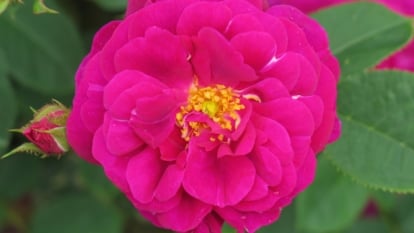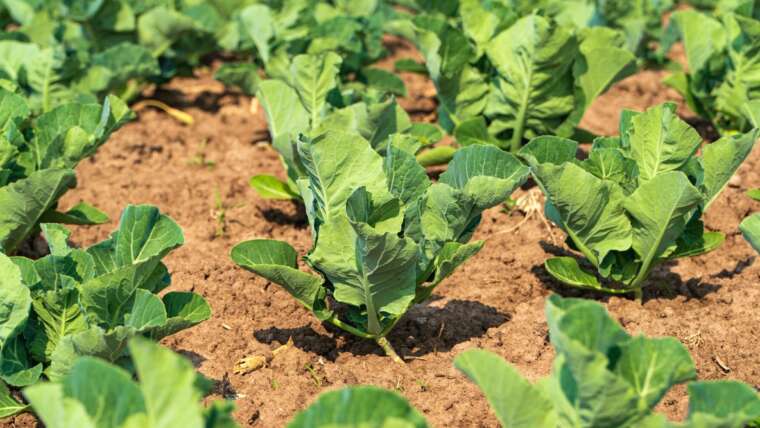There are many different varieties of agave. When you think of this plant, you might think of items commonly made from agave, like tequila, agave syrup, or skincare products made from its aloe-like inner flesh. But do you think of flowers? Probably not. Agave flowers are rare.
Agave americana is commonly referred to as the century plant because of the misconception that they only bloom once a century. But blooms aren’t quite that rare, and there are hundreds of agave varieties with different bloom rates. Most are monocarpic, too, meaning they will only flower once in their lifetime.
The Short Answer
Yes, they bloom! Agave americana, the most popular variety used in home gardens and landscaping, does bloom. It is one of the monocarpic varieties that blooms once and then dies shortly thereafter.
The whole purpose of the plant is to bloom to produce seeds. Once that purpose is served, it shrivels and dies. There are also a few non-monocarpic varieties, like Agave ornithobroma, which bloom yearly and continue to live.
The Long Answer
Agave americana stores starch to fuel a 25-30 feet tall flower stalk.
As mentioned above, not all agave plants bloom at the same rate. This depends on the variety and whether it is monocarpic or non-monocarpic. Agave americana got its common name, “century plant”, because it can take upwards of 80 years to produce a bloom. But this is somewhat of a misnomer since it can also take as little as ten years to produce a bloom. It just depends!
Not much is known about what drives an agave plant to flower and when, but providing it with ideal growing conditions ensures that it survives long enough to produce a flower stalk. Agaves are adapted for survival in harsh deserts and prefer sandy, well-drained, neutral soil. They don’t require much water at all outside of natural rainfall. They need full sun to thrive.
Agave americana needs to store a large amount of starch to have the energy and resources to send up a flower stalk. This inflorescence can grow up to 25-30 feet tall, and this narrow spike showcases long, tubular, yellow flowers that eventually produce seeds.
What varieties of agave plants bloom?
Both monocarpic and non-monocarpic varieties of agave bloom. Monocarpic varieties bloom once, whereas non-monocarpic varieties can bloom yearly. Some varieties bloom but are harvested for other purposes before they get the chance to do so.
Agave americana
 The century plant blooms only once within 10-30 years and dies after flowering.
The century plant blooms only once within 10-30 years and dies after flowering.
This variety is monocarpic and blooms once in its lifetime, dying shortly thereafter. These generally bloom within 10-30 years of age. The mature spread of this plant can range from 6-10 feet wide.
The grey-green leaves can grow 3-5 feet in length and are heavy with spikes at the tip. It is often referred to as the century plant since it can take multiple decades to bloom.
Agave ornithobroma
 Maguey Pajarito, a non-monocarpic species, blooms yearly, growing two feet tall and three feet wide.
Maguey Pajarito, a non-monocarpic species, blooms yearly, growing two feet tall and three feet wide.
This variety is also known as Maguey Pajarito. This non-monocarpic species can bloom yearly, but depending on the conditions, it may not bloom at all. This dense and compact species grows two feet tall and three feet wide.
It is native to Northern Mexico, where it grows in high-elevation deserts. It forms a dense solitary rosette in the center.
Blue Weber Agave
 This agave rarely blooms as it’s harvested early, growing up to six feet.
This agave rarely blooms as it’s harvested early, growing up to six feet.
The agave variety associated with tequila is Blue Weber agave. To be called tequila, it must contain at least 51% of this variety. For this reason, it doesn’t often get the chance to bloom since it is harvested before that time. Allowing it to bloom would result in the death of the plant. When left to fully mature, it can grow six feet tall and wide in about five to seven years.
The Verdict
 Select agave variety based on bloom frequency, post-bloom lifespan, and intended use (edible/medicinal).
Select agave variety based on bloom frequency, post-bloom lifespan, and intended use (edible/medicinal).
Choose the variety of agave that you plant in your yard wisely. Some factors to consider include: do you mind waiting decades for this plant to bloom? And if so, are you okay with the plant dying after it produces said bloom? Or do you want your plant to bloom annually and survive? Are you growing this plant for edible or medicinal purposes, and don’t mind if it blooms at all?
When do agave plants bloom?
 Ideal growing conditions help agaves store starches and bloom; soil moisture might trigger flowering.
Ideal growing conditions help agaves store starches and bloom; soil moisture might trigger flowering.
Focus on providing ideal growing conditions so the plant can store starches and be ready to bloom when the moment is right. Botanists are beginning to believe that agave blooms might be triggered by the amount of soil moisture the plant received in the prior year.
But in general, plants that are bigger and healthier tend to bloom first, ahead of plants that are the same age. Most species bloom between 8 and 30 years old. In addition to producing blooms that give way to seeds, these plants produce pups that can be dug up and replanted for even more agave.
The Verdict
 Agave flowering is uncertain; enjoy their foliage and replant pups for increased bloom chances.
Agave flowering is uncertain; enjoy their foliage and replant pups for increased bloom chances.
The blooms of agave plants are unpredictable. If you’re growing this plant for its stunning and rare flower, then you might be rewarded within a few years, or you might never see it in your lifetime. The best approach is to grow them for their beautiful foliage and view the blooms as a bonus. You can also dig up and replant the pups to increase your chances of witnessing a bloom.
Final Thoughts
Growing agave is worthwhile regardless of the bloom. Their grey-green leaves are beautiful and make a great addition to desert landscaping, where gardeners deal with drought, heat, and other harsh conditions. Agaves were made to thrive in these environments. If you give it a shot, you might get rewarded with a bloom, too.




